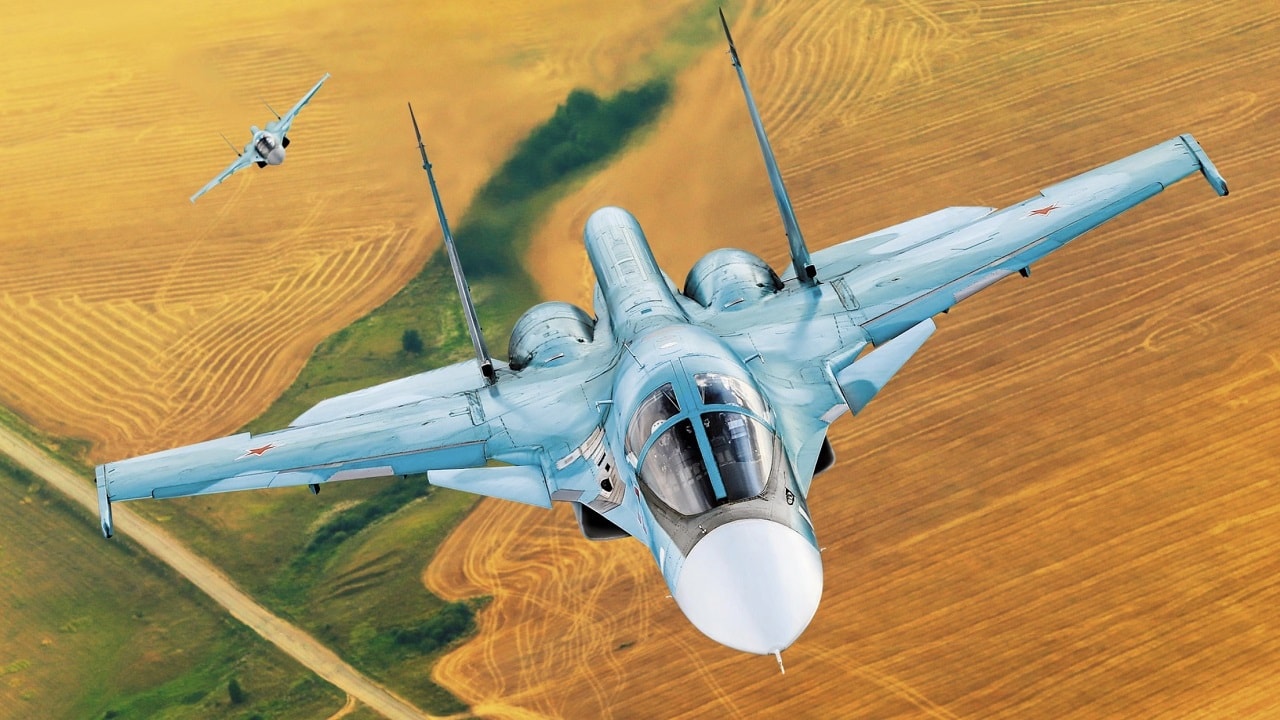What Happened to the Russian Air Force in Ukraine? One of the big puzzles of the war in Ukraine has been the performance of the Russian Aerospace Forces.
As the war continues and is almost at the 10-month mark, the Russian air force continues to be relegated to a secondary role.
Russian Air Force: Fewer Combat Sorties Over the Battlefield
As the fighting is less mobile and is taking place over concentrated areas, the Russian Aerospace Forces have had to reduce the number of sorties over Ukraine because of the prevalence of anti-aircraft weapons.
According to a recent assessment by the British Military Intelligence, Russian aircraft conduct tens of tactical combat sorties over Ukraine as opposed to the hundreds that they did in previous months.
“The decrease in sorties is likely a result of continued high threat from Ukrainian air defences, limitations on the flying hours available to Russian aircraft, and worsening weather,” the British Military Intelligence assessed in its latest estimate of the war.
According to the Ukrainian Ministry of Defense, the Russian Aerospace Forces have lost 280 fighter, transport, attack, and bomber jets and more than 260 attack and transport helicopters over Ukraine.
However, Western and independent come up with much lower figures. For example, the British Ministry of Defense puts the number of destroyed Russian fighter and attack jets at around 60, while the Oryx open-source intelligence website can visually verify that Russia has lost 63 fighter and attack jets and 71 attack and transport helicopters.
Most of the verified Russian fix- and rotary-winged aircraft losses concern Ka-52 Alligator attack helicopters and Su-25 Frogfoot attack jets.
These aircraft are tasked with supporting ground troops. They are less agile and more robust than fighter jets and can take a hit. But the Ukrainian forces are equipped with Western anti-aircraft missiles, including the fearsome FIM-92 Stinger weapon system.
Moreover, the Russian crews are largely using unguided bombs and missiles for ground support or attack missions, which means that they have to approach the target to fire, thus making them more vulnerable to anti-aircraft fire.
“With Russia’s ground attack tactics largely reliant on visual identification and unguided munitions, the Russian air force will likely continue a low rate of ground attack operations through the poor winter weather,” the British Military Intelligence added.
To be sure, it is hard to accurately attribute and assess losses in an ongoing war, and both sides have a reason to inflate or deflate the numbers. What is certain, however, is that the Russian air force—nor indeed the Ukrainians—have the crucial air superiority.
Can’t Operate Effectively
The Royal United Services Institute (RUSI), a U.K.-based think tank and the oldest of its kind in the world, recently released a report on the air war over Ukraine.
The RUSI report contains some valuable information on the performance of the two air forces and what the future might hold. One point in the report highlighted the inability of the Russian Aerospace Forces to effectively operate at low altitudes due to the prevalence of anti-aircraft missile systems on the Ukrainian side.
Russian pilots are now either forced to launch cruise missiles from very large distances at fixed targets or risk getting shot down if they approach the frontlines.
Expert Biography: A 19FortyFive Defense and National Security Columnist, Stavros Atlamazoglou is a seasoned defense journalist specializing in special operations, a Hellenic Army veteran (national service with the 575th Marine Battalion and Army HQ), and a Johns Hopkins University graduate. His work has been featured in Business Insider, Sandboxx, and SOFREP.

